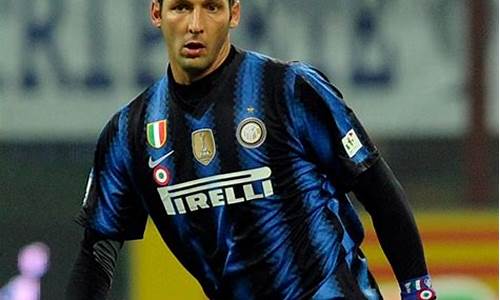现代奥运会的历史英语_现代奥运会的起源与发展简介英语
1.用英语介绍奥运会的项目及奥运会的发展来源
2.奥林匹克运动会英语介绍
3.奥运会的来历..英文(急- -~)
4.介绍北京奥运会的英语短文(中英翻译)
5.奥运会的起源-英语(简短版)

April 6, 1896, was definitely a day to remember. King George I of Greece announced the opening of the first International Olympic Games in Athens. A total of 245 athletes from 14 nations competed in the ancient Panathenaic stadium.
In this first modern Games, the winner was awarded a silver medal. The second athlete was given a bronze medal while the third athlete received nothing.
The man who re-introduced the Olympic Games to the modern world was Baron Pierre de Coubertin (1863-1937) of France. He was enthusiastic about the Games because he thought they were similar to the French education system, which combined moral and social education in school games.
He travelled the world to gather support for his dream to have countries come together in the name of sport. "The important thing in life is not the victory but competing; the main thing is not to have won but to have fought well," he said.
Coubertin held an international meeting in Paris in 1894 and established the International Olympic Committee. Two years later his ideal — bringing together the youth of the world in a friendly competition - became a reality at the first celebration of the modern Olympic Games.
From the start of the modern Olympics, male athletes of every race, religion, and nationality have been allowed to participate.
No women competed in 1896. A few female golfers and tennis players were allowed to take part in the 1900 Games. Female gymnasts and track-and-field athletes first competed at the 1928 Games. Women's Olympic sports have grown hugely since then. Today women make up about half of the total number of competitors.
This has not been the only change. Figure skating was part of the Summer Games of 1908 and 1920, and ice hockey was played in 1920. They then became part of the Winter Olympics, which was first held in 1924 in France.
Although founded to help world peace, the modern Olympic Games sometimes become a stage for political arguments. The most controversial Olympics were the Berlin Games of 1936. Under the rule of the Nazis, German Jewish athletes were banned from the German team.
The Olympic Games were interrupted twice during the First and Second World Wars. The event was not held in 1916, 1940 and 1944.
回眸现代奥运百年之路,感受沧桑变化中那份历久弥坚的执著
1896年4月6日是一个值得纪念的日子。那天,希腊国王乔治一世宣布希腊举办的首届国际奥林匹克运动会开幕。来自14个国家的245名运动员参加了这场在古老的雅典体育场举行的盛会。
在这次首届现代奥运会上,冠军被授予一枚银牌,亚军获得一枚铜牌,而季军什么奖牌也没有。
法国人巴隆·皮耶尔·德·顾拜旦 (1863-1937)将奥运会重新引入了现代世界。他之所以对奥运会热情很高,是因为他觉得奥运会与法国的学校教育具有相通之处,两者都将道德教育和社会教育融入到运动会之中。
他周游世界,寻求人们对他奥林匹克梦想的支持,希望世界各国能以体育运动的名义相聚。他说:“人生最重要的东西并不是胜利本身,而是竞争的过程,重要的不是赢得胜利,而是努力奋斗。”
1894年,顾拜旦在巴黎召开了一个国际会议,成立了国际奥林匹克委员会。两年后,他的梦想——以一个友好比赛使各国青年汇聚——在首届现代奥林匹克运动会时变成了现实。
自现代奥运会诞生之日起,各种族、宗教、民族的男性运动员均被允许参赛。
1896年奥运会的时候,还没有女性选手参赛。1900年奥运会时,开始有一些女性高尔夫球选手和网球选手获准参赛。而到了1928年奥运会,女性体操和田径运动员首次出现在比赛场上。自此以后,奥林匹克运动在女性中发展壮大。如今,女选手大约占据了参赛选手总人数的半边天。
除此之外,奥运会的变化还有很多。比如,花样滑冰成为1908年和1920年夏季奥运会的运动项目,此外,1920年的比赛项目中加入冰球。它们随后成为了冬季奥运会的竞赛项目。首届冬季奥运会于1924年在法国举行。
举办现代奥运会的初衷在于促进世界和平,但有时它却变成一个政治纷争的舞台。1936年的柏林奥运会最受争议。当时因为纳粹在德国主政,所以德国的犹太运动员被禁止代表德国队参赛。
现代奥运会曾因两次世界大战而中断,1916年、1940年和1944年的奥运会都未能如期举行。
用英语介绍奥运会的项目及奥运会的发展来源
现代奥运会创始人顾拜旦于1913-1914年间设计了奥运会的会旗。它由5个奥林匹克环从左至右套接而成,可以是单色,也可以是蓝、黄、黑、绿、红5种颜色。最初的解释是五种颜色代表各国国旗的颜色,后来又将5个不同颜色的圆环解释为五大洲的象征。1920年,奥林匹克旗第一次飘扬在安特卫普夏季奥运会体育场。这届奥运会后,历届奥运会开幕式上由上届举办城市转交此旗,由举办城市保存,比赛期间主运动场仅悬挂代用品。
Baron de Cupertino designed the Olympic Flag in 1913-14. It has five interlocking rings (blue, yellow, black, green and red) on a white background. The ring's colours were based on the knowledge that at least one of these colours is on every flag of each participating country. The five interlocking rings represent the union of the five continents and the meeting of the athletes of the world at the Olympic Game.
The Olympic Flag was used for the first time in the 7th Olympiad in Antwerp, Belgium in 1920. It is paraded during the opening ceremony of each Game. At the end of the Games, the Olympic Flag is presented to the next host city by the Games host city.
奥运1000句08北京奥运歌曲总汇奥运英语词汇奥运名人一览奥运百科知识
The OLYMPIC FLAME
圣火起源于古希腊神话传说。相传古希腊神普罗米修斯为解救饥寒交迫的人类,瞒着宙斯偷取火种带到人间。古希腊在每届奥运会举行以前,人们都要在赫拉神庙前点燃圣火。现代奥运会创立后,当圣火被点燃的那一刹那,本届奥运会圣火的传递活动即宣告圆满结束。随着奥运会的结束,本届奥运会圣火也将被熄灭。第一次火炬接力活动是从1936年柏林奥运会开始的。
A flame was lit during the entire event of the Olympics during the ancient Olympic Game known as the Olympic Flame.
A new flame is lit using a parabolic mirror to focus the rays of the Sun at the ancient Olympic Stadium in Olympia, Ellis, Greece. The Flame is then transported to the host city where the last runner lights the large Olympic Cauldron by it and this burns throughout the Games. The Flame is extinguished during the closing ceremony. The Olympic Flame was first lit during the opening ceremony of the IX Olympic Games at Amsterdam, Netherlands in 1928.
The first Olympic Torch Relay occurred at the 1936 Berlin Olympic Games.
as a Chinese ,i am so proud that olympic games can be held in beijing and i am looking forward the coming days when it happens .olympic games can be held in beijing,which shows that China has gained the great progress thorugh both Chinese government and chinese people 's hard working .To be capable to hold the olympic games is the acknowledgement to beijing, chinese government ,and chinese people claimed by olympic games committee.i do believe the olympic games of 2008 will be successful.olympic games in beijing can promote the comunication between china and western countries ,change the attitude to china that western countries once held ,and make the whole world know china well .it will make the people from all over the world see the china's development做为一个中国人.对于奥运会在北京举行.我感到非常的自豪.也很期待那天的到来.奥动会能够在北京举行.说明中国政府和中国人民经过这些年的努力.中国己经取得了长足的发展,具备举办奥运会的实力.这是奥委会对北京的认可.对中国政府和中国人民的认可.相信这届奥运会一定能够成功.奥运会在北京举行,可以促进中西交流,改变一些西方国家对中国的认识,让世界更加了解中国,让全世界人民都看到中国的发展.
奥林匹克运动会英语介绍
1).体操 gymnastics
2).游泳 swimming
3).击剑 fencing
4).举重 weightlifting
5).棒球 baseball
6).篮球 basketball
7).排球 volleyball
8).乒乓球 table tennis
9).足球 soccer
10).跳水 diving
11).马球 polo
12).水球 water polo
13).垒球 softball
14).网球 tennis
15).赛艇 canoe
16).冲浪 surfing
17).自行车 cycling
18).羽毛球 badminton
19).田径 track and field
20).手球 handball
21).摔交 wrestling
22).拳击 boxing
23).射箭 toxophily
24).射击 shooting
25).柔道 judo
26).骑马 equestrian
27).曲棍球 hockey
race 跑
middle-distance race 中长跑
long-distance runner 长跑运动员
sprint 短跑 (美作:dash)
the 400 metre hurdles 400米栏
marathon 马拉松
decathlon 十项
cross-country race 越野跑
jump 跳跃
jumping 跳跃运动
high jump 跳高
long jump 跳远 (美作:broad jump)
triple jump, hop step and jump 三级跳
pole vault 撑竿跳
throw 投掷
throwing 投掷运动
putting the shot, shot put 推铅球
throwing the discus 掷铁饼
throwing the hammer 掷链锤
throwing the javelin 掷标枪
walk 竞走
horizontal bar 单杠
parallel bars 双杠
rings 吊环
trapeze 秋千
wall bars 肋木
side horse, pommelled horse 鞍马
weight-lifting 举重
weights 重量级
boxing 拳击
Greece-Roman wrestling 古典式摔跤
hold, lock 揪钮
judo 柔道
fencing 击剑
winter sports 冬季运动
skiing 滑雪
ski 滑雪板
downhill race 速降滑雪赛,滑降
slalom 障碍滑雪
ski jumping competition 跳高滑雪比赛
ski jump 跳高滑雪
ice skating 滑冰
figure skating 花样滑冰
roller skating 滑旱冰
bobsleigh, bobsled 雪橇
football 足球
rugby 橄榄球
basketball 篮球
volleyball 排球
tennis 网球
baseball 垒球
handball 手球
hockey 曲棍球
golf 高尔夫球
cricket 板球
ice hockey 冰球
swimming 游泳
medley relay 混合泳
crawl 爬泳
breaststroke 蛙式
backstroke 仰式
freestyle 自由式
butterfly (stroke) 蝶泳
diving competition 跳水
water polo 水球
water skiing 水橇
rowing 划船
canoe 划艇
boat race 赛艇
yacht 游艇
kayak 皮船
sailing 帆船运动
road race 公路赛
race 计时赛
chase 追逐赛
motorcycle, motorbike 摩托车
racing car 赛车
racing driver 赛车驾驶员
rally 汽车拉力赛
riding 骑马
jockey, polo 马球
show jumping competition 跳跃赛
steeplechase 障碍赛
ten-meter platform 10米跳台
five-meter platform 5米跳台
three-meter springboard 3米跳板
one-meter springboard 1米跳板
starting dive 出发起跳
breaststroke 蛙泳
crawl stroke 爬泳
back stroke 仰泳
side stroke 侧泳
butterfly stroke 蝶泳
dolphin butterfly stroke 海豚式蝶泳。 奥林匹克运动会(英语:Olympic Games 希腊语:Ολυμπιακο? Αγ?νε?),简称“奥运会”,是一个由国际奥林匹克委员会主办的国际性综合运动会,包括夏季奥林匹克运动会、冬季奥林匹克运动会、残疾人奥林匹克运动会、青少年奥林匹克运动会、听障奥林匹克运动会和特殊奥林匹克运动会。奥林匹克运动会每四年举办一次(曾在两次世界大战中中断三次,分别为公元1916年、1940年和1944年),每届会期不超过16天。
奥林匹克运动会因起源于古希腊奥林匹亚(Olympia)而得名。古代奥运会从公元前776年到公元393年,共历经293届,后被罗马皇帝狄奥多西一世以邪教活动罪名而废止。1894年在巴黎召开的国际体育会议,根据法国贵族皮埃尔·德·顾拜旦(Pierre de Coubertin)的倡议成立了国际奥委会,并决定恢复奥运会。现代第一届奥运会于1896年在希腊雅典举行,此后在世界各地轮流举行。由于1924年开始设立了冬季奥林匹克运动会,因此奥林匹克运动会习惯上又称为“夏季奥林匹克运动会”。
奥运会的来历..英文(急- -~)
奥林匹克运动会历史:
The Olympic Games originated in ancient Greece more than 2,000 years ago and was named after Olympia.?
After the ancient Olympic Games was suspended for 1,500 years, the Frenchman Coubertin proposed the initiative of the modern Olympic Games at the end of the 19th century.?
The Olympic Committee was established in 1894, the first Olympic Games was held in 1896.
The first Winter Olympics was held in 1924, the first Paralympic Games was held in 1960.
The first Youth Olympic Games was held in 2010, and the first Youth Olympic Games was held in 2012. .
In July 2017, the International Olympic Committee decided to host the 2024 Olympic Games in Paris, France, hosted the 2028 Olympic Games in Los Angeles.
And officially announced at the 131st Plenary Session of the International Olympic Committee in Lima, Peru on September 14.?
The ownership of the two Olympic Games.
翻译:
奥林匹克运动会发源于两千多年前的古希腊,因举办地在奥林匹亚而得名。古代奥林匹克运动会停办了1500年之后,法国人顾拜旦于19世纪末提出举办现代奥林匹克运动会的倡议。
1894年成立奥委会,1896年举办了首届奥运会,1924年举办了首届冬奥会,1960年举办了首届残奥会,2010年举办了首届青奥会,2012年举办了首届青冬奥会。
2017年7月,国际奥委会决定由法国巴黎承办2024年奥运会,由美国洛杉矶承办2028年奥运会,并于9月14日在秘鲁首都利马召开的国际奥委会第131次全会中正式宣布这两届奥运会的归属。
扩展资料:
1948年,国际奥林匹克委员会将每年6月23日设立为国际奥林匹克日,旨在纪念现代奥林匹克运动会。回顾人类运动发展史,我们发现,人类自古便有喜爱玩耍的特性,古代各国也都曾有过许多对游戏的记载。
古希腊人通过将单纯的游戏发展成为运动,以全民参与的形式,将人类之间的斗争意识转化为竞争精神,用更高、更快、更强的理念,来体验和挑战身体与精神的极限。
古希腊奥林匹亚的运动会已具备现代奥林匹克运动会的雏形。
据说远在公元前11世纪,古希腊便出现了定期举办的运动赛会。不过那时的运动会大都是地区性的,并且只有赛跑一种项目。公元前8世纪,奥林匹亚地区的运动会发展至鼎盛,逐渐形成包括希腊许多其他城邦,以及小亚细亚等诸多地区共同参加的体育盛事。
当时的运动会被誉为“献给奥林波斯的宙斯的运动会”,以表示对神话传说中主神宙斯的崇拜。运动会每4年举办一次,第一次有记载的赛事发生于公元前776年,这便是我们今天熟知的古代奥林匹克运动会。
最初,运动会只举行一天,公元前472年举办的第七十七届运动会延长至5天。第一天清晨,人们在“迎宾馆”举行开幕仪式。随后,运动员、教练员、年轻运动员的父亲或兄长宣誓遵守比赛规则。宣誓完毕,运动员及裁判员走过通向体育场的甬道,接受来自地母神德米特拉女祭司的祝福。
第二天上午举行赛马和战车比赛,下午是五项全能比赛,晚间还要举行纪念佩洛普斯的活动,因为人们认为奥林匹克运动会的起源与他有着直接的关系。第三天是运动会最重要的一天。这一天,首先举行祭祀宙斯的活动,人们在祭坛前为他献上100头牛,随后进行盛大的游行。
下午则是赛跑、长跑、往返跑等赛事。体育场内跑道的长度为192.27米,即一个“斯达德”。
据说这是根据大力士赫拉克勒斯的脚长而定,相传他的双脚巨大无比且跑步如飞,人们便将他脚长的600倍定为一个“斯达德”,作为跑步比赛的基本单位。如今,希腊文和欧洲许多其他语言仍在使用这一词汇,意为“体育场”(Studio)。
第四天举行如摔跤、拳击等力量型比赛,第五天就要举行颁奖仪式了。胜利者佩戴橄榄枝花冠,人们在宴会上欢唱赞歌,时常庆祝到下一天清晨。
当时,奥林匹亚的运动会是全希腊最为盛大的运动盛事,来自各地的优秀运动员无不以参赛为荣,而获得比赛胜利,则是一个运动员所能获得的最大荣誉。
人民网-古代奥林匹克的故事
介绍北京奥运会的英语短文(中英翻译)
The Olympics of Ancient Greece
Although records cannot verify games earlier than 776 B.C., the contests in Homer's Iliad indicate a much earlier competitive tradition. Held in honor of Zeus in the city of Olympia for four days every fourth summer, the Olympic games were the oldest and most prestigious of four great ancient Greek athletic festivals, which also included the Pythian games at Delphi, the Isthmian at Corinth, and the Nemean at Argos (the Panathenaea at Athens was also important). The Olympics reached their height in the 5th–4th cent. B.C.; thereafter they became more and more professionalized until, in the Roman period, they provoked much censure. They were eventually discontinued by Emperor Theodosius I of Rome, who condemned them as a pagan spectacle, at the end of the 4th cent. A.D.
Among the Greeks, the games were nationalistic in spirit; states were said to have been prouder of Olympic victories than of battles won. Women, foreigners, slaves, and dishonored persons were forbidden to compete. Contestants were required to train faithfully for 10 months before the games, had to remain 30 days under the eyes of officials in Elis, who had charge of the games, and had to take an oath that they had fulfilled the training requirements before participating. At first, the Olympic games were confined to running, but over time new events were added: the long run (720 B.C.), when the loincloth was abandoned and athletes began competing naked; the pentathlon, which combined running, the long jump, wrestling, and discus and spear throwing (708 B.C.); boxing (688 B.C.); chariot racing (680 B.C.); the pankration (648 B.C.), involving boxing and wrestling contests for boys (632 B.C.); and the foot race with armor (580 B.C.).
Greek women, forbidden not only to participate in but also to watch the Olympic games, held games of their own, called the Heraea. Those were also held every four years but had fewer events than the Olympics. Known to have been conducted as early as the 6th cent. B.C., the Heraea games were discontinued about the time the Romans conquered Greece. Winning was of prime importance in both male and female festivals. The winners of the Olympics (and of the Heraea) were crowned with chaplets of wild olive, and in their home city-states male champions were also awarded numerous honors, valuable gifts, and privileges.
The Modern Olympics
The modern revival of the Olympic games is due in a large measure to the efforts of Pierre, baron de Coubertin, of France. They were held, appropriately enough, in Athens in 1896, but that meeting and the ones that followed at Paris (1900) and at St. Louis (1904) were hampered by poor organization and the absence of worldwide representation. The first successful meet was held at London in 1908; since then the games have been held in cities throughout the world (see Sites of the Modern Olympic Games, table). World War I prevented the Olympic meeting of 1916, and World War II the 1940 and 1944 meetings. The number of entrants, competing nations, and events have increased steadily.
To the traditional events of track and field athletics, which include the decathlon and heptathlon, have been added a host of games and sports—archery, badminton, baseball and softball, basketball, boxing, canoeing and kayaking, cycling, diving, equestrian contests, fencing, field hockey, gymnastics, judo and taekwondo, the modern pentathlon, rowing, sailing, shooting, soccer, swimming, table tennis, team (field) handball, tennis, trampoline, the triathlon, volleyball, water polo, weight lifting, and wrestling. Olympic events for women made their first appearance in 1912. A separate series of winter Olympic meets, inaugurated (1924) at Chamonix, France, now includes ice hockey, curling, bobsledding, luge, skeleton, and skiing, snowboarding, and skating events. Since 1994 the winter games have been held in even-numbered years in which the summer games are not contested. Until late in the 20th cent. the modern Olympics were open only to amateurs, but the governing bodies of several sports now permit professionals to compete as well.
As a visible focus of world energies, the Olympics have been prey to many factors that thwarted their ideals of world cooperation and athletic excellence. As in ancient Greece, nationalistic fervor has fostered intense rivalries that at times threatened the survival of the games. Although officially only individuals win Olympic medals, nations routinely assign political significance to the feats of their citizens and teams. Between 1952 and 1988 rivalry between the United States and the Soviet Union, rooted in mutual political antagonism, resulted in each boycotting games hosted by the other (Moscow, 1980; Los Angeles, 1984). Politics has influenced the Olympic games in other ways, from the propaganda of the Nazis in Berlin (1936) to pressures leading to the exclusion of white-ruled Rhodesia from the Munich games (1972). At Munich, nine Israeli athletes were kidnapped and murdered by Palestinian terrorists. The International Olympic Committee (IOC), which sets and enforces Olympic policy, has struggled with the licensing and commercialization of the games, the need to schedule events to accommodate American television networks (whose broadcasting fees help underwrite the games), and the monitoring of athletes who seek illegal competitive advantages, often through the use of performance-enhancing drugs. The IOC itself has also been the subject of controversy. In 1998 a scandal erupted with revelations that bribery and favoritism had played a role in the awarding of the 2002 Winter Games to Salt Lake City, Utah, and in the selection of some earlier venues. As a result, the IOC instituted a number of reforms including, in 1999, initiating age and term limits for members and barring them from visiting cities bidding to be Olympic sites.
History
Games held in ancient times on the plain of Olympia in Greece every four years. It was a time for laying aside political and religious differences, as athletes from all the Greek cities and districts competed. The games included patriotic and religious rituals as well as athletic contests, and high honors were given to the winners. The Greeks counted their years by olympiads (periods of four years) and dated events from the first Olympics in 776 b.c.
The Olympic Games deteriorated under Roman rule of Greece and were halted in the fourth century. They were revived in the late nineteenth century, with goals of peace and fellowship modeled on those of the ancient Olympics. The modern Olympics include many athletic events of the original games, such as the discus throw.
古代奥运会的产生
奥运会的全称是“奥林匹克运动会”,“奥林匹克”一词源于希腊的地名“奥林匹亚”。奥林匹亚位于雅典城西南360公里的阿菲斯河山谷,这里风景如画,气候宜人.古希腊人在这里建起了许多神殿,因此,古人把这块土地叫做阿尔菲斯神城,也称"圣地"奥林匹亚,依当时的信念,它象征着和平和友谊。
古代希腊和地中
海区域其他国家的人们在祭典和收获季节,常常举行盛大集会,并进行各种游乐和竞技活动,热闹非凡。最初这项活动分散在各地,也不定期,但以奥林匹亚的集会最为盛大。
公元前884年,古希腊爆发战争,各地战火连绵,瘟疫成灾,农业欠收.希腊平民非常渴望和平,怀念当年的那种庆典活动。于是,奥林匹亚所在的伊利斯城邦国王联络其他几个城邦的国王,达成了一项定期的奥林匹亚举行运动会的协议,并规定在运动会年实行“神圣休战日”。“神圣休战日”期限是三个月。在这期间,任何人不得动刀兵发动。即使正在交战的双方,也得放下武器,准备去奥林匹亚参加运动会。从此,就产生了全希腊性的赛会.到公元前776年,第一次用文字记录下获奖者安全名。这就是后人所说的第一届古希腊运动会。之后,这种赛会每四年举行一次.因此比赛地点在奥林匹亚,也称它是古代奥林匹克运动会,简称古代奥运会。从公元前776年到公元349年,古代奥运会被罗马帝国的皇帝废除为止,古代奥运会一共举行了293届。
古代奥运会并不都是欢乐
古代奥运会对普通奥运观众并不意味着欢乐。一个典型的奥运观众,如果是从雅典出发,他必须跋山涉水穿过大半个伯罗奔尼撒半岛,沿着一条崎岖不平的朝圣者古道,头顶地中海夏季的炎炎烈日,步行或借助骡马的脚力,用两个星期的时间才能走完雅典到奥林匹亚的300多公里路程。如果来自海外殖民地,走海路则需要更长时间
当筋疲力尽的观众终于抵达奥林匹亚,真正的考验才刚刚开始。奥林匹亚基础设施极为简陋,仅有一家稍微像样的旅店,并且只向外交使团和官员开放,级别不够的贵族只能自己搭帐篷解决住宿问题。至于另外8万名普通观众——其中将近一半是兜售饮食、纪念品的小商贩——不得不到宙斯神庙附近的旷野里自便。于是,奥运期间这里变成了一片卫生状况恶劣的露营地。
奥林匹亚的运动场不设观众席,也没有树阴遮蔽,因为宗教原因,奥运会上不允许观众戴帽子,人们只能从早到晚站在尘土飞扬的运动场中间,暴晒于烈日底下。由于夏季河水断流,井水供不应求,观众脱水、中暑的情况时有发生。那时,希腊没有完善的排污系统,干涸的河床成了几万人的临时厕所,垃圾就地堆放,再加上遍地的苍蝇,卫生状况可想而知。
就是在这样的条件下,古代奥运会连续举办了一千多年。据说,奥运会的脏乱程度令人闻之色变,以至于有这样一种说法——对于不服管教的奴隶,主人会以威胁的口气对他说:再不听话,就罚你去奥林匹亚看奥运会! (《南方周末》8.19赋格文)
奥运会会歌
现代首届夏季奥运会于1896年4月6日在雅典开幕,开幕典礼中,演奏了一曲庄严的古典弦乐,1958年国际奥委会将它定为奥运会会歌,会歌作曲者为希腊萨马拉斯,作词者为帕拉马斯。
奥运会会旗
1913年,法国顾拜旦建议设国际奥委会会旗,并设计为白底,无边,中央从左至右有蓝,黄,黑,绿,红5个套连圈环,依次代表欧亚非澳美5洲,白底意指所有国家都能在自己旗帜下参赛。1914年7月,奥林匹克大
会首次悬挂奥林匹克旗。1920年,举办第5届夏季奥运会的比利时奥委会赠送国际奥委会一面同样的旗,奥运会期悬挂,后成定制,历届奥运会开幕由上届举办城市转交此旗,由举办城市保存,比赛期间主运动场仅悬挂借用品,1952年,奥斯陆市赠送国际奥委会冬季奥运会旗,交接,保存和使用方法同夏季奥运会。1970年,国际奥委会在《奥林匹克评议》第4期上对会旗赋予新含义:它象征5大洲团结,运动员以公正,坦率的竞赛和友好的精神在奥运会上相见。
奥运圣火
1934年,国际奥委会雅典会议决定恢复古奥运会旧制,奥运会期间主体育场燃烧奥林匹克圣火,圣火火种取自奥林匹克,采用火炬接力方式传到主办国,在此之前1928年的第9届奥运会在荷兰的阿姆斯特丹市
的主体比赛上自始至终有一高塔燃着熊熊的焰火。火种用聚光镜集阳光点燃而成,然后通过接力传送经4个国家至东道国主办地,这是奥运会首次举行这种活动。1936年7月20日,奥林匹亚为第11届夏季奥运会举行点火仪式后每人手持火炬跑1公里的接力,经保加利亚,南斯拉夫,匈牙利,奥地利,捷克斯洛伐克,8月1日传到柏林,全程3075公里,参加接力的共有3075人,从这届起,国际奥委会正式规定点燃奥林匹克火焰是每届奥运会开幕式不可缺少的仪式.此外,燃点圣火是为了纪念一次大战中牺牲的战士,而火炬传送则象征在世界各地传播和平的友谊。
现代奥运会的奠基人——皮埃尔?德?顾拜旦
皮埃尔·德·顾拜旦是现代奥运会的奠基人。他出生于巴黎贵族家庭。中学毕业后入巴黎大学攻读法律、政治、后又去英国深造,学教育学。当时英国的户外体育对顾拜旦震动很大,他立志
回去要改变法国对体育的漠不关心,他更向往的是扩大世界的体育交流。1863年,顾拜旦提出举办类似古奥运会的比赛,但不是照搬,而是把过去只限于希腊人参加的古奥运会扩大到世界范围。尽管顾拜旦的主张遭到一些反对派的杯葛,但在他不懈努力下,1894年6月16日终于有20个国家派代表在法国巴黎大学召开了第一届“重建国际奥林匹克运动会国际会议”。6月23日晚,委员会正式宣布成立国际奥林匹克委员会,这一天,对世界体育运动的发展,对奥林匹克运动都具有划时代的意义。不少国家把这一天作为体育节日,中国也于1986年将这天定为奥林匹克日。
现代奥运会的历史
奥运会自公元 776 年于希腊的奥林匹亚举行以来,已经有 1200 年的历史。当时的运动项目有五项全能(包含铁饼、标枪、跳远、赛跑和摔跤)、赛跑、拳击、摔跤、Pankration(拳击和摔跤的混合运动)、四轮马车赛跑和骑马。
奥林匹克的复兴始自 1896 年,当时希腊的雅典举办了第一次现代奥运会,当时有来自 14 个国家的 245 名运动员参加。 此后,参赛运动员、参赛国家和比赛项目与日俱增,在 2000 年澳大利亚的悉尼奥运会上,有来自 199 个国家的 10,000 多名运动员参赛。
冬季体育项目最早在 1908 年添加到奥运会中,当时是花样滑冰运动。冰球项目自 1920 年加入。在 1924 年,冬奥会第一次在法国的查米尼斯单独举行。 自 1994 起,冬奥会定于不和夏季奥运会同年举行,因此目前奥运会为每两年一届,冬季奥运会和夏季奥运会交替进行。
奥林匹克运动有一系列独特而鲜明的象征性标志,如奥林匹克标志、格言、奥运会会旗、会歌、会徽、奖牌、吉祥物等。这些标志有着丰富的文化含义,形象地体现了奥林匹克理想的价值取向和文化内涵。今天,随着奥林匹克运动的不断发展壮大,奥林匹克标志也已经在全世界家喻户晓、深入人心。
《奥林匹克宪章》规定,奥林匹克标志、奥林匹克旗、奥林匹克格言和奥林匹克会歌的产权属于国际奥委会专有。国际奥委会可采取一切适当措施使奥林匹克标志、旗、格言和会歌在各国和国际上获得法律保护。为了加强对奥林匹克知识产权和奥林匹克标志的保护,保障和维护奥林匹克知识产权人和奥林匹克标志权利人的合法权益,我国先后颁布了《北京市奥林匹克知识产权保护规定》(2001年10月11日北京市政府令第85号发布)和《奥林匹克标志保护条例》(2002年2月4日中华人民共和国国务院令第345号发布)。
当今世界上流传最广的标志要数奥林匹克五环了,随着奥林匹克运动的发展,它已成为奥林匹克精神与文化的形象代表,五环“转”到哪里,奥林匹克运动就在哪里生根开花。
说起五环的来历,曾经有过这样一个有趣的故事。 1936年第11届柏林奥运会第一次举行火炬传递活动,火炬的传递路线自奥林匹亚开始,从希腊北部出境,沿多瑙河穿过奥地利,最后进入德国。为了烘托这一具有象征意义的活动,奥运会组委会主席卡尔?迪姆及其同事几乎完全按照古奥运会的情景来布置沿途经过的古希腊遗址。火炬到达德尔菲帕那萨斯山的古代运动场时要举行一个特别仪式,这时,迪姆突发奇想,在一个高约3英尺的长方形石头的四面设计并刻上了现代奥林匹克运动的五环标志,放在了古运动场的起跑线一端。仪式结束后,火炬继续北上,而这块作为道具的石头却被留在了古运动场。
由于极少有人知道这块刻有五环标志石头(后被称做“迪姆之石”)的真实身份,此后的很长一段时间,它被当做了“有3000年历史的古代奥运会遗迹”。这个以讹传讹的错误直到20世纪60年代才被德尔菲的希腊官员指出。1972年5月,这个假文物被送到德尔菲的另一个地方——古罗马广场入口处。
事实上,现代奥林匹克运动的五环标志出自现代奥运会创始人顾拜旦之手。顾拜旦认为奥林匹克运动应该有自己的标志,这个念头在他的脑海里盘桓已久。1913年,他终于构思设计了五环标志和以白色为底印有五环的奥林匹克旗,打算在国际奥委会成立20周年之际推出这个标志。
1914年6月15日~23日,国际奥委会在法国巴黎索邦学院举行代表大会,同时庆祝国际奥委会成立20周年。在纪念大会上,顾拜旦兴致勃勃地拿出自己设计的五环标志和一面印着五环的旗帜向大家展示,并建议将它们作为奥林匹克运动的标志。听了顾拜旦对五环标志的说明后,会议确定将奥林匹克五环和奥林匹克旗作为奥林匹克标志。
奥林匹克五环标志由5个奥林匹克环从左至右套接而成,可以是单色,也可以是蓝、黄、黑、绿、红5种颜色。最初的解释是五种颜色代表各国国旗的颜色,后来又将5个不同颜色的圆环解释为五大洲的象征。
奥运会会旗,3米长,2米宽,以白色为底,象征纯洁。蓝、黄、黑、绿、红五环,环环相扣。1914年,在巴黎举行的奥林匹克大会首次悬挂了奥林匹克旗。1920年,奥林匹克旗第一次飘扬在安特卫普夏季奥运会体育场。这届奥运会后,比利时奥委会赠送了国际奥委会一面同样的旗,在奥运会期间悬挂,后成定制,历届奥运会开幕式上由上届举办城市转交此旗,由举办城市保存,比赛期间主运动场仅悬挂代用品。1952年,奥斯陆市赠送国际奥委会冬季奥运会会旗,交接、保存和使用方法与夏季奥运会相同。
1979年6月,国际奥委会正式宣布了会旗和五环的含义:根据《奥林匹克宪章》,奥林匹克旗帜和5个圆环的含义是:象征五大洲的团结以及全世界运动员以公正、坦率的比赛和友好的精神在奥运会上相见。
参考资料:
Olympic Games as the Olympic Games, which will include Xiaao, the Olympic and Paralympic Games, Green Olympics and Special Olympics. International Olympic Committee is sponsored by the project include a variety of international sports games, held once every four years. The first Olympic Games originated in ancient Greece (776 BC), due to held in Olympia named. The end of the 19th century by the French Baron Coubertin founded the true sense of the modern Olympic Games.
(中文)
奥林匹克运动会简称奥运会,它包括夏奥会、冬奥会、残奥会、青奥会和特奥会。是国际奥林匹克委员会主办的包含多种体育运动项目的国际性运动会,每四年举行一次。奥林匹克运动会最早起源于古希腊(公元前776年),因举办地在奥林匹亚而得名。19世纪末由法国的顾拜旦男爵创立了真正意义上的现代奥林匹克运动会。
The Olympic Games are a major international event featuring summer and winter sports, in which thousands of athletes participate in a variety of competitions. The Games are currently held every two years, with Summer and Winter Olympic Games alternating, although they occur every four years within their respective seasonal games.
声明:本站所有文章资源内容,如无特殊说明或标注,均为采集网络资源。如若本站内容侵犯了原著者的合法权益,可联系本站删除。












